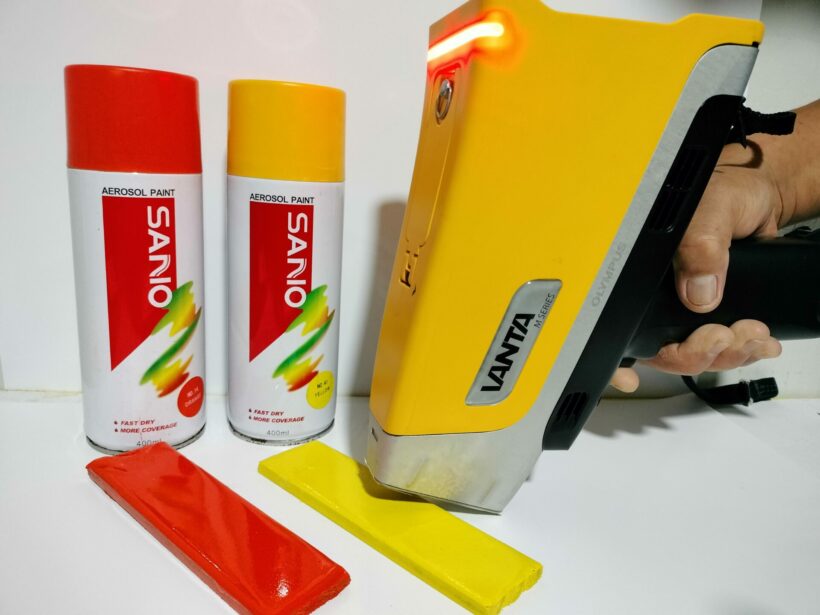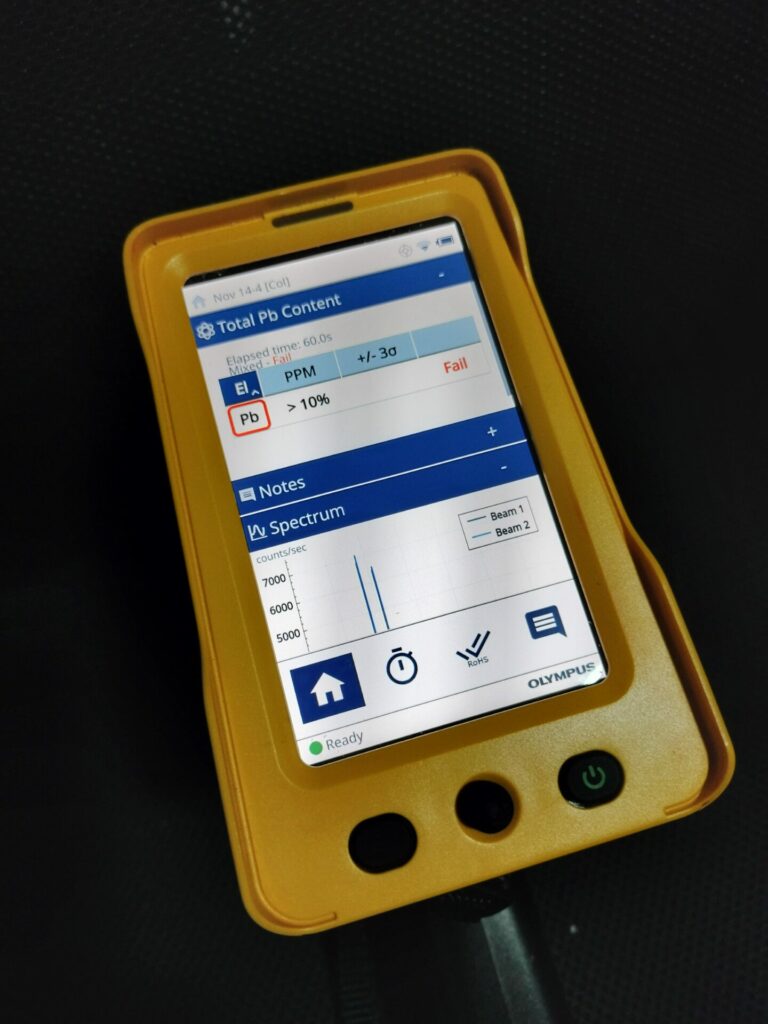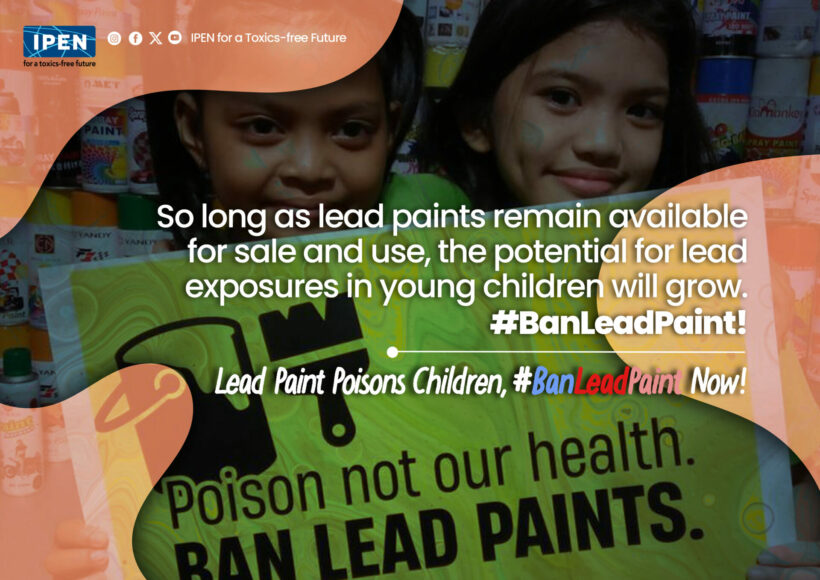Two more aerosol paints sold online were found to contain extremely high concentrations of lead, a cumulative toxicant that is forbidden in the production of paints.
The toxics watchdog group EcoWaste Coalition revealed that the lead content of the two variants of Sanvo Spray Paints it ordered from online dealers based in Caloocan City exceeded the maximum 90 parts per million (ppm) limit for lead in paints and similar surface coatings.

Based on the XRF screening conducted by the EcoWaste Coalition, these spray paints contain extremely high concentrations of lead.
The orange variant contained 25, 370 parts per million (ppm) of lead, while the yellow variant had over 100,000 ppm! The products were from the American Sanvo Chemical Technology Holdings as written on the label. However, there was no information on the country of manufacture.

As per XRF screening, the yellow Sanvo Spray Paint contains over 10 percent (or over 100,000 ppm) of lead.
The group used a handheld X-ray fluorescence (XRF) analyzer to check if the products were compliant with the said 90 ppm limit for lead in paints under the Department of Environment and Natural Resources (DENR) Administrative Order No. 2013-24.
Also known as the Chemical Control Order (CCO) for lead and lead compounds, the said issuance directed the phase-out from 2013 to 2016 of lead-containing architectural, decorative, and household paints, and from 2013 to 2019 for leaded paints used in industrial applications.
Lead-containing aerosol or spray paints, which are often sourced from other countries, should not be imported and offered for sale in line with the CCO, the EcoWaste Coalition emphasized.
Spray paints with undisclosed lead content are often marketed as general-use products that can be applied on a wide range of materials and are very accessible to consumers, the group observed. These paints are recommended for fixing scratches on cars, repairing minor damages in bicycles, cars, household appliances, toys, and accessories, and decorating school projects, the group noted.
As stated by the Global Alliance to Eliminate Lead Paint (or the Lead Paint Alliance), a cooperative initiative co-led by the United Nations Environment Program (UNEP) and the World Health Organization (WHO), “paints containing lead pose risks both in their application phase (as new paint) and once applied, giving rise to legacy issues that extend beyond the life of the painted surface due to chipping and deterioration or demolition of the painted surface.”
Lead in paint is a major source of childhood lead exposure, which can harm the brain and the central nervous system, among other effects. Exposure to lead early in life can result in lower intelligence quotient (IQ), reduced attention span, impaired learning ability, and increased risk of behavioral problems.
“There is no safe level of lead exposure,” according to the WHO, which has classified lead among the “ten chemicals or groups of chemicals of major public health concern.”
https:///www.who.int/news-room/fact-sheets/detail/lead-poisoning-and-health










